Share this post!
5 Exercises for Plantar Fasciitis
Plantar fasciitis is a common condition that we often see and is the most common cause of heel pain. This condition occurs when the plantar fascia becomes inflamed. This presents as pain usually on the bottom of the heel where the plantar fascia starts. It is most aggravated with the first few steps in the morning. Some factors that may lead to plantar fasciitis are abnormal foot or ankle biomechanics, improper footwear, repetitive stress and obesity. The natural history of plantar fasciitis is often self-limiting and commonly resolves within one year.
Conservative treatment has been found to be effective in treating many cases of plantar fasciitis. This includes chiropractic treatment, stretching, orthotics and night splints. Here are a few exercises that you can try if you are suffering with plantar fasciitis:
-
Stretching:
The calf muscle (gastrocnemius) inserts into the back of your heel via the Achilles tendon. The goal is to help relax this tendon as it inserts into the same area as the plantar fascia which can lead to increase tension.
- Start by standing in front of a wall or heavy chair. Plant the leg you want to stretch and step forward with the other leg, putting your hands on the wall. Keep your back leg straight, so you can feel the stretch in your back lower leg. Adjust your distance from the wall, or the bend in your front leg to control the amount of stretch in your leg. Hold for 15 seconds, doing two repetitions multiple times per day. There are many ways to stretch this muscle, so find what works best for you.
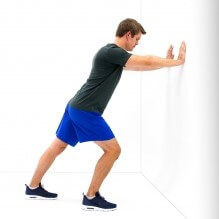
- Rolling:
Rolling is a way you can massage your plantar fasciitis. You can use a small ball like a lacrosse or golf ball. You can even use a frozen water bottle.
- Roll the ball under the arch of your foot while seated. This can be once or twice per day.
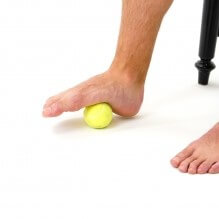
-
Strengthening: Calf raises
- Standing on both legs, raise up on to your toes, remembering to push up through your big toe. Use a table or back or chair to help with balance. When you have reached the top, slowly lower down. You can progress this exercise by going up on both legs, then lifting one leg off the ground and slowly lowering down. Or you can try going up and down while on just one leg.
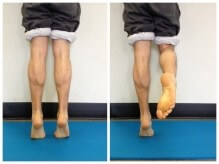
-
Strengthening: Foot muscles
- Toe grabs: While seated place a towel under your foot and draw it towards you, using your toes. Make sure to keep your heel on the ground througout the exercise.
- Toe lifts: with your foot planted on the ground, try alternating between lifting your big toe and your other toes keeping the ball of your foot and heel on the ground throughout the exercise.
- Arch exercise: Sit in a chair with both feet placed flat on the floor. Raise the arch of your foot by sliding your big toe toward your heel without curling your toes or lifting your heel or ball of foot. Hold this position for a few seconds then relax and repeat.
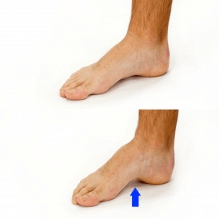
-
Ankle proprioception:
These exercises will help teach your body to control the position of your ankle and foot to ensure proper biomechanics with movement.
- Stand on one leg with your knee slightly bent. Hold for 30 seconds.
- To progress this exercise stand on a pillow
- Next while standing on one leg with knee slightly bent, point to the positions of clock numbers slowly with the other leg. Return to starting position and touch the next number.
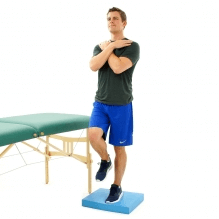
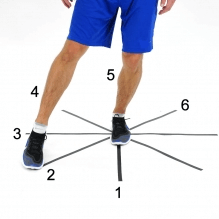
These exercises can be helpful in reducing your pain and helping to increase function of the foot and ankle. It can be helpful to seek guidance from your local health care practitioner when dealing with plantar fasciitis so that you know all the options that could benefit you, such as custom orthotics.
Resources:
Stuber K, Kristmanson K. Conservative therapy for plantar fasciitis: a narrative review of randomized controlled trials. Journal of the Canadian Chiropractic Association [Internet]. 2006 Jun [cited 2019 Aug 8];50(2):118–33. Available from: https://search.ebscohost.com/login.aspx?direct=true&db=s3h&AN=21469530&site=eds-live
